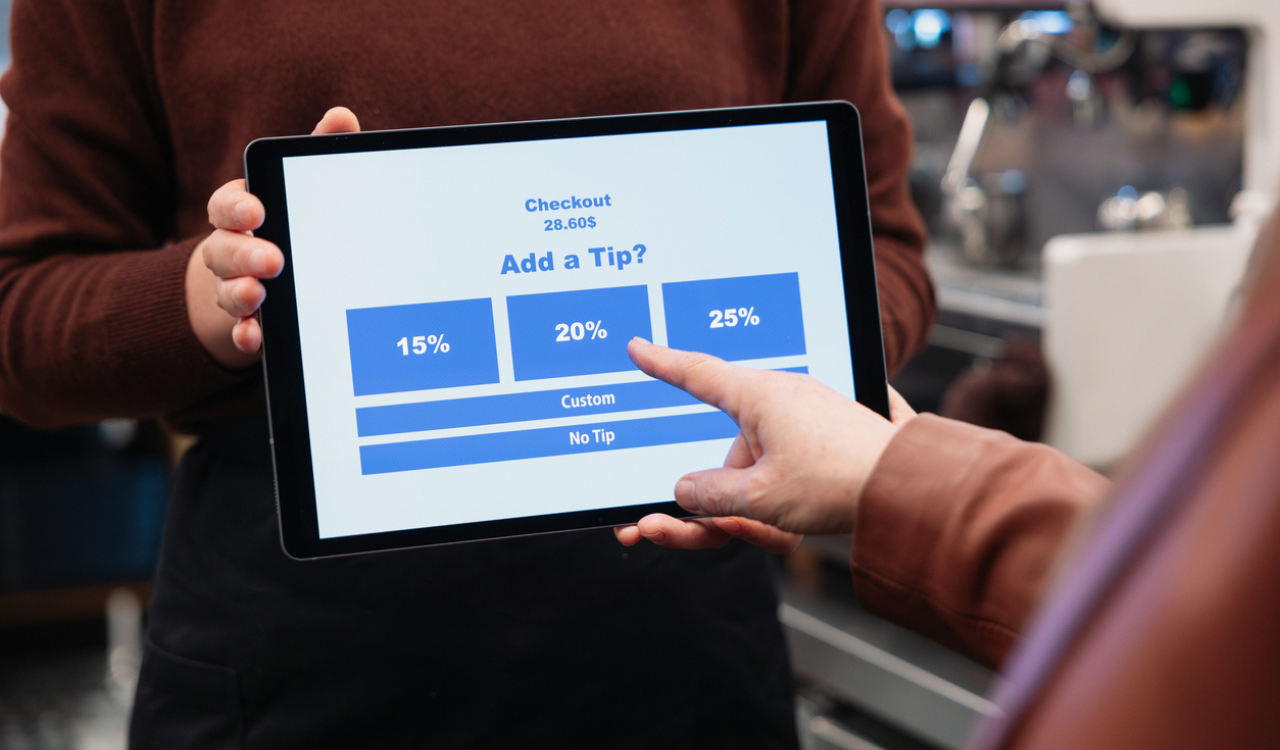When President Trump stood next to his super-sized tariffs chart on April 2nd, he looked wholly satisfied as he actualized his very own shock and awe moment. The world was expecting tariffs, but not a worldwide economic cataclysm. Now, the globe is in the throes of motion sickness as the tariff yo-yo continues to wind and unwind, following an all too predictable pattern.
The time to start drawing the roadmap for the coming 24 months and beyond is now. Just make sure to add elevations and alternate routes to that roadmap, it is going to be a steep climb full of twists and turns.
Blindsided
Narrowing the focus to retail, the industry can’t be blamed this time for being caught flat-footed. Many retailers anticipated a moderate increase to the already existing tariffs on China. We searched for any analysis or warning signs that tariffs might be imposed on goods from Vietnam, India, Bangladesh, Germany, and well…everywhere except Russia and North Korea. No one expected the destructive (and self-destructive) scope and scale of the scheme; neither short sellers nor Cassandra got this one right.
Now two months into the madness, while we may feel ill, we are no longer shocked or awed. Wall Street has developed the TACO investment strategy, aiming to profit from the tariff gyrations, but collective consensus concludes that neither a plan nor fact-based roadmap exists. The OECD (Organization for Economic Co-operation and Development) surmises that the U.S. will bear the heaviest brunt of Trump’s tariffs. Quartz covered the OECD report on tariffs in a piece titled, “America is the biggest loser in Trump’s trade war, OECD says.” The Quartz article concludes, “The result isn’t always an immediate shock. More often, it’s a slower burn, where uncertainty and higher costs quietly erode economic momentum quarter by quarter.”
As the slow burn commences, the retail industry is shifting from paralysis to stumbling through, paying increased freight fees while rushing to land merchandise before the next possible tariff cliffs in July and on August 15. This is no way to run a railroad, nor IKEA U.S., Printemps U.S., or NIKE.
Tune Out the Short-Term Noise
TRR is not a news publication; we mete out strategy. As these words spill onto the page, a federal court has found many of Trump’s tariffs illegal, the administration appealed, and then the administration won a stay. The opposite may be true when you read this piece. Rather than react to the drama du jour, we have been thinking about the bellwethers that are signaling the medium and long-term effects of this disruptive circumstance, and how it may compound and complicate pre-existing and ever-present concerns.
If Trump wakes up tomorrow and decides to tactically unwind the tariffs on every country, spinning it as part of his plan all along, things will not magically snap back to where they were. This tactic will have a long tail. Beyond the complexities of shattered trust, other obstacles loom. Logistics have been splintered, ships are not where they should be, and their crews displaced or furloughed. Global consumer sentiment has likely changed leaving international consumers with a diminished appetite for importing U.S. brands (think New Balance, Jack Daniels, Ralph Lauren). Retailers placed aggressive, uninformed bets, accelerating inventory purchases with more urgency than planning. Further complicating strategy is the hard truth that the tariff issue does not exist in a vacuum. The system has been damaged. No matter what unfolds in the coming weeks, Q3 will bring empty shelves, higher prices, and declining demand. The White House does not control the basic laws of economics, nor can it escape the axiom, you break it, you own it. The time to start drawing the roadmap for the coming 24 months and beyond is now. Just make sure to add elevations and alternate routes to that roadmap, it is going to be a steep climb full of twists and turns.
Bellwethers
While considering your next steps, these are five disruptive signals to watch for:
- Slowing consumer spending
- Rising unemployment rates
- Rising consumer bankruptcies
- Rising avian to human bird flu transmissions
- Eroding U.S. China relations
Slowing Consumer Spending
While the signals are weak, the May 30 estimates from the Bureau of Economic Analysis show that consumer discretionary spending dropped in April. April’s expenditure estimates on apparel and footwear dipped 3.4 percent, and other non-durable goods purchases dropped 5.9 percent. The impact of April’s decline will be reflected in the second quarter reporting, but PepsiCo joined Proctor & Gamble, Chipotle, and others in reducing the 2025 full-year profit guidance. The consumer goods giants and burrito stalwart blamed slowing sales on reduced consumer spending according to reporting in the New York Times. PepsiCo cut its 2025 profit outlook from the mid-single digits to even with the company’s 2024 results, while reporting a 1.8 percent decline in Q-1 2025 revenue during the company’s recent investors’ call. The Times quotes Jamie Caufield, PepsiCo’s C.F.O., “Relative to where we were three months ago, we probably aren’t feeling as good about the consumer now.”
Rising Unemployment Rates
Unemployment rates remained steady in April at 4.2 percent while many government employees and contractors scattered throughout the United States are currently on paid leave. While this cohort is technically employed, the future employment status of many government workers is uncertain.
While Walmart is showing no signs of “eating” the tariffs, the company was the first major retailer to announce staff cuts. It announced 1500 layoffs in the company’s Global Technology Team. Walmart may be the first but watch this space. There are already murmurs from Costco, Best Buy, Target, TJX, Macy’s and Urban Outfitters, according to The Wall Street Journal.
Rising Consumer Bankruptcies
The New York Fed recently released a mix of good and bad news in its Q1 household debt and credit. Total household debt increased by $167 billion and stood at $18.20 trillion by the last count. The agency reported, “Credit card balances fell by $29 billion from the previous quarter to stand at $1.18 trillion; auto loan balances declined by $13 billion to $1.64 trillion, marking only the second time balances have fallen from a prior quarter since 2011.” However, the awakening burden of student loan debt paused since 2020, and grew by $16 billion to reach $1.63 trillion. Gen X borrowers nearing retirement age owe a portion of the debt.
Buy-Now-Pay-Later platforms are showing signs of stress. Public Media’s MARKETPLACE reported on BNPL debt balances. “Affirm users have an average outstanding balance of $736, and the 30-day delinquency rate stood at 2.4 percent for the first three months of this year, according to company reports.” In the broadcast, Senior Litigation and Policy Council for the Center for Responsible Lending Nadine Chabrier suggested that BNPL consumers tend to be “financially vulnerable.”
In January, shortly before major staff and service reductions, the Consumer Financial Bureau released findings. The Bureau discovered that more than one-fifth of consumers using BNPL loans in 2022 had subprime or deep subprime credit scores. The CFPB research also revealed that “More than three-fifths of BNPL borrowers held multiple simultaneous BNPL loans at some point during the year, and one-third had loans from multiple providers.” New York State is looking into regulating the lenders.
After reading these statistics, it should come as no surprise that Americans are increasingly bankruptcy curious. Consumer Affairs consulted data gathered by Legal-Shield, a legal service provider. “Americans making legal inquiries for declaring bankruptcy reached their highest levels in the first quarter of 2025 since 2020,” said Matt Layton, LegalShield senior vice president of consumer analytics. Layton continued, “Consumer bankruptcy concerns are rising not because of short-term volatility, but due to sustained financial pressure on household budgets.”
Rising Animal-to-Human Bird Flu
While only one animal-to-human death has been reported and the risk to the general population is low, the CDC reports the risk to humans exposed to infected animals is moderate to high. Had Covid never happened, one might read this report with a shrug, but it did, and no one should. Rather than simply shrugging, Health and Human Services Secretary Robert Kennedy Jr. seemingly discounted any concerns as his department canceled a $766 million government contract with Moderna to develop a bird flu vaccine. We know and understand the risks, should this grow out of control, to our industry, the economy, and humanity. Again, watch this space.
Eroding U.S.- China Ties
This area is heavily covered in general news. We will simply highlight areas of specific concern to our industry.
- Rising Risk of Conflict in the Taiwan Strait
An invasion or hot war involving Taiwan would disrupt global access to advanced semiconductors. Taiwan produces over 90 percent of the world’s most sophisticated chips, which are foundational to everything from AI-driven retail personalization to mobile commerce, smart logistics, and cloud infrastructure. A disruption here is not theoretical—it would be catastrophic for both operational continuity and innovation roadmaps. - S. China Semiconductor and Tech Escalations
The ongoing U.S. semiconductor ban, and China’s countermeasures, including the suspension of exports related to aircraft and high-end chipmaking materials, signal that we are entering a phase of prolonged economic warfare. This affects not only chip availability but also global price volatility and supplier unpredictability for tech-enabled retail. While government incentives like the U.S. CHIPS Act are signals of a pivot toward onshoring, timelines are long, and capacity short-term is limited. - Rare Earth Minerals & Magnetic Leverage
China’s tightening of exports of rare earth minerals, used in electric motors, batteries, and high-efficiency manufacturing, reinforces the uncomfortable truth: The U.S. does not control all strategic levers in the tariff race. As tariffs rise and supply lines shrink, retail infrastructure, especially in logistics and automation, may become costlier and slower to upgrade. - Targeting Chinese Students and the Erosion of Soft Power
S. visa restrictions for Chinese students raise questions about whether the U.S. is playing offense, defense, or committing an own goal. - Global Realignment of Alliances and Trade Agreements
Watch for emerging regional alliances (such as ASEAN-led trade blocs or BRICS currency moves) that may signal a shift away from Western-dominated global trade norms. This can impact sourcing decisions, shipping routes, and even the relative importance of current markets.
Eyes Open
This is a complicated time to lead a retail organization or brand. Long-term strategies are easy to advise but challenging to develop. A deeper challenge is nurturing a nimble, anticipatory culture, particularly in times of stress. We encourage you to start by keeping your eyes open for the non-obvious signals that will impact our industry and lay the foundation for future success by having the courage to think about the unthinkable and prepare for the climb out of this mess.





